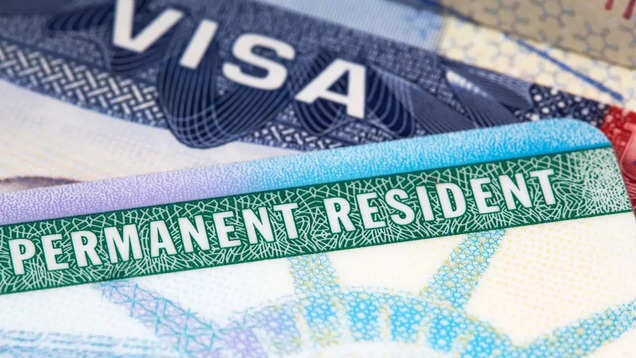The United States offers a wide range of visas tailored to various purposes, such as work, study, family reunification, and travel. Understanding the types of visas available can help individuals determine the best pathway for their needs. Below, we outline the primary visa categories and their key features.
1. Immigrant Visas (Permanent Residency)
Immigrant visas are for individuals seeking to live permanently in the U.S. These visas often lead to a green card and are typically based on family ties, employment, or humanitarian needs.
Types of Immigrant Visas:
- Family-Based Visas:
- Immediate Relatives (IR): For close relatives of U.S. citizens (e.g., spouses, children under 21, and parents).
- Family Preference Categories (F): For extended family, such as siblings or married children.
- Employment-Based Visas (EB):
- EB-1: For individuals with extraordinary abilities, outstanding professors, or executives.
- EB-2: For professionals with advanced degrees or exceptional abilities.
- EB-3: For skilled workers, professionals, and some unskilled workers.
- EB-4: For special immigrants, such as religious workers.
- EB-5: For investors creating jobs through substantial financial investments.
- Diversity Visa (DV) Lottery: A program granting visas to individuals from countries with low immigration rates to the U.S.
2. Nonimmigrant Visas (Temporary Stay)
Nonimmigrant visas allow individuals to visit or stay in the U.S. for a limited time and specific purposes.
Key Nonimmigrant Visa Categories:
- Tourism and Business:
- B-1: For business-related visits.
- B-2: For tourism, medical treatment, or visiting family.
- Work Visas:
- H-1B: For specialty occupations requiring a degree.
- H-2A: For temporary agricultural workers.
- H-2B: For temporary non-agricultural workers.
- L-1: For intracompany transferees.
- O-1: For individuals with extraordinary abilities.
- P-1: For athletes and entertainers.
- TN/TD: For Canadian and Mexican professionals under NAFTA/USMCA.
- Student and Exchange Visas:
- F-1: For academic students.
- M-1: For vocational or technical students.
- J-1: For exchange visitors participating in approved programs.
- Cultural and Religious Visas:
- R-1: For religious workers.
- Q-1: For cultural exchange participants.
- Temporary Protected Status (TPS) and Special Circumstances:
- Certain visas provide relief for individuals fleeing unsafe conditions in their home country.
3. Humanitarian Visas
These visas provide protection and support for individuals facing persecution, violence, or other extreme hardships.
Examples Include:
- Asylum and Refugee Status: For individuals fleeing persecution due to race, religion, nationality, or political opinion.
- U Visa: For victims of crime who assist law enforcement.
- T Visa: For victims of human trafficking.
- Temporary Protected Status (TPS): For nationals of countries affected by conflict or natural disasters.
4. Transit and Crewmember Visas
Designed for individuals traveling through or working temporarily in the U.S. as part of their international roles:
- C Visa: For travelers transiting through the U.S.
- D Visa: For airline and maritime crew members.
5. Special Visa Categories
Some visas cater to niche groups:
- K Visas: For fiancés/fiancées of U.S. citizens and their children.
- S Visa: For informants assisting law enforcement.
- V Visa: For certain family members awaiting immigration processing.
Choosing the Right Visa
Selecting the appropriate visa depends on the individual’s goals, such as studying, working, or joining family in the U.S. Each visa type comes with distinct requirements, application processes, and timelines.
For personalized guidance and assistance with your immigration journey, consult a knowledgeable immigration attorney. Keeping up-to-date with U.S. immigration laws and policies can ensure a smoother application process.



